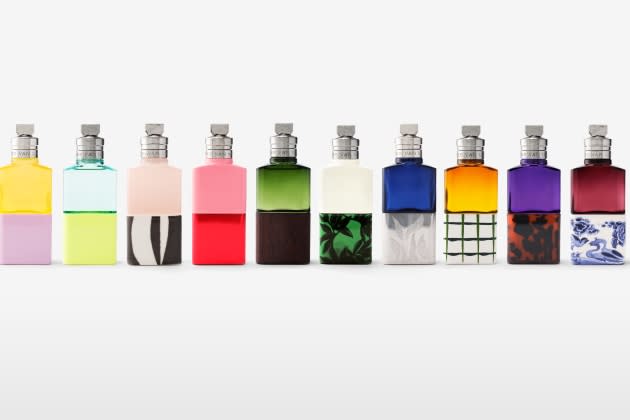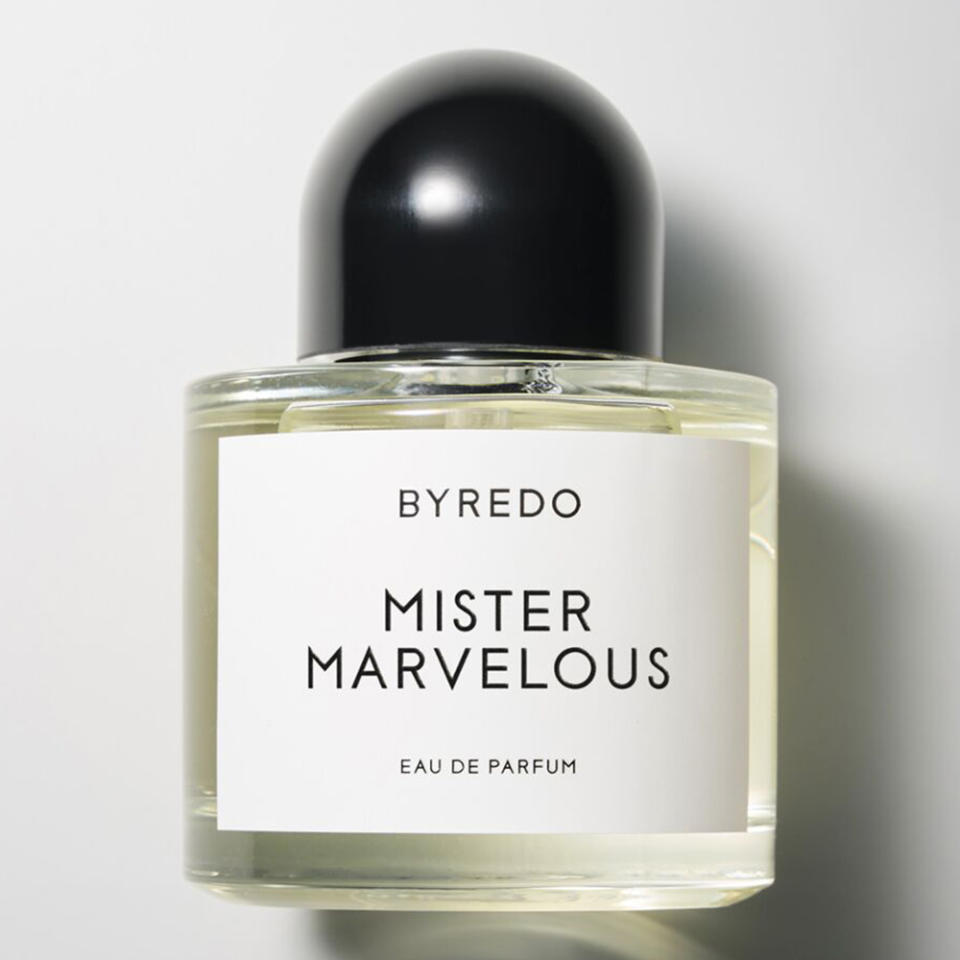Puig Sales Surpass 3 Billion-Euro Mark in 2022
- Oops!Something went wrong.Please try again later.

PARIS — Beauty and fashion group Puig sped past its 3 billion-euro sales goal in 2022 and lassoed a 10 percent market share of prestige fragrances worldwide.
The family-owned Spanish company registered net sales of 3.62 billion euros in the 12 months, a 40 percent rise in reported terms and a 30 percent increase on a like-for-like basis on-year, driven by each of its product categories, which posted double-digit sales gains.
More from WWD
Business was spurred by a strong performance of Puig’s own brands amid a rise in consumer spending — especially for perfumes — and despite headwinds, such as the geopolitical environment, inflation and rising interest rates.
Marc Puig, chairman and chief executive officer of Puig, noted that the company’s showing “is a result of many of the choices that we have taken over the past 15 years.”
That included narrowing the group’s portfolio of categories, and focusing on storytelling and Puig-owned brands, which now make about 95 percent of its overall sales.
In 2022, Puig’s net profits were 400 million euros, up 71 percent. Its earnings before interest, taxes, depreciation and amortization reached 638 million euros, a 37 percent increase against 2021.
Puig had in March 2021 presented a three-year plan with an aim to reach sales of 3 billion euros in 2023 and 4.5 billion euros in 2025. However, due to strong growth during the past two years, the group already doubled its net revenue a year ahead of plan and is on track to triple its revenues by 2025.
The company was acquisitive in 2022, snapping up a majority share of Swedish prestige fragrance brand Byredo and incorporating wellness brands Kama Ayurveda and Loto del Sur, from India and Colombia respectively. The deals greatly increased the number of Puig’s own sales points and brought 1,000 new employees into the group.
Puig said the addition of the three companies had a limited impact on overall 2022 sales.
The group noted that in 2022, its fragrance and fashion business’ sales combined reached 2.67 billion euros, up 40 percent, beating the market average. The division’s sales growth was spurred by organic growth plus the addition of new brands, such as Byredo.

Puig attaining 10 percent market share last year in prestige fragrances was thanks to some of its own brands, including Paco Rabanne, ranking fifth, and Carolina Herrera, coming in sixth. Jean Paul Gaultier, meanwhile, placed 17th.
Puig remains the world’s fifth largest fragrance-maker.
“In the niche category, our intention is to reach 20 percent market share, because that’s a growing territory,” Marc Puig said.
Among the fragrance and fashion division’s highlights were, from the prestige category, the successful introduction of Fame from Paco Rabanne, the consolidation of Carolina Herrera’s Good Girl, which ranks third in the U.S., and the strong performance of Jean Paul Gaultier’s Scandal.
Notable in Puig’s niche fragrance portfolio was the opening of direct sales points for Penhaligon’s and L’Artisan Parfumeur in China, and Dries Van Noten’s first fragrance collection’s launch.
Puig’s fashion business, which includes the Paco Rabanne, Carolina Herrera, Jean Paul Gaultier and Nina Ricci brands, grew apace with the rest of the company.
Marc Puig highlighted Jean Paul Gaultier’s successful collaborations. The executive commended Wes Gordon’s evolution of the Carolina Herrera brand.
When asked about the renewal of Julien Dossena’s contract as Paco Rabanne’s creative director, after 10 years, or whether the fashion brand might change designers, Puig said: “We are very happy with the collaboration with Julien.”
Regarding Nina Ricci, he said: “We are very excited about what’s going on with that brand right now.”
Makeup was the product category that grew fastest for Puig in 2022, notching up a 52 percent rise to 626 million euros, spurred by the Charlotte Tilbury and Carolina Herrera brands. Charlotte Tilbury was the first-ranking color cosmetics brand in the U.K., and its position was bolstered by products such as the Pillow Talk makeup line and technological innovations combining consumer’s physical and virtual experience of the brand’s products.
Last year, Carolina Herrera registered its best results since launching its makeup collection in 2020. The Byredo makeup business saw the launches of numerous new products, while Dries Van Noten rolled out 30 shades of lipstick.
Puig’s dermocosmetics activity posted sales up 20 percent to 328 million euros. Investment in innovation and tech were stepped up for Uriage and Apivita, so as to keep developing science-based dermatology products with eco-friendly formulas, particularly in the sun care and antiaging lines. The leading skin care product for Charlotte Tilbury was Magic Cream.
By region, Puig’s growth was fastest in the Americas, where sales increased 56 percent to 1.31 billion euros, or 36 percent of overall group sales. That turnout was primarily reinforced by business in the U.S., its largest market by sales, and the dollar’s appreciation against the euro.
In the U.S., the prestige fragrance category and Charlotte Tilbury, which ranked first in Sephora, registered significant growth.
Puig’s sales in Asia, where the group reinforced its presence, rose 41 percent to 349 million euros. China remained a top-10 market for the group and posted 36 percent growth, despite the country’s zero-COVID-19 measures.
“It’s not in the top three yet, but we expect it to come soon,” Marc Puig said.
Sales in the Europe, Middle East and Africa zone came in at 1.96 billion euros, representing a 31 percent gain. Europe has five of Puig’s 10 major countries: the U.K., Spain, France, Germany and Italy.
Spain, the birthplace of the group, generates 7 percent of the company’s overall sales.
Puig’s digital business remained robust, rising by 23 percent and representing 25 percent of total company revenues.
The company’s sales in travel retail gained 72 percent versus 2021, thanks to travelers coming from the Americas and Europe. Against 2019, prior to the coronavirus pandemic, sales in the channel rose 28 percent.
Related to the environment, society and governance, Puig has committed to limiting global warming by 1.5 degree centigrade by 2030, in keeping with the Paris Agreement, and to becoming net-zero in emissions by 2050. With that in mind, each brand in the company defined its ESG goals.
At Puig, today 50 percent of power used comes from renewable sources, and all of its factories manufacturing perfumes send zero waste to landfill. In 2022, Puig was granted EcoVadis’ Gold Medal certificate and the Carbon Disclosure Project gave it an A- in Climate.
Puig’s ongoing Invisible Beauty Makers social action program supports the mentoring and financing of high-impact initiatives.
When asked if the company might make more acquisitions, Marc Puig said: “We have leveraged our balance sheet already, so we need to digest some of the acquisitions. We need to keep nurturing these brands.
“They are placed in growth territories, so that will help us continue growing faster than the industry for awhile,” he continued. “We have momentum with the different brands, clearly, to outgrow the industry for the next 12 months for sure — if not more.”
Best of WWD

